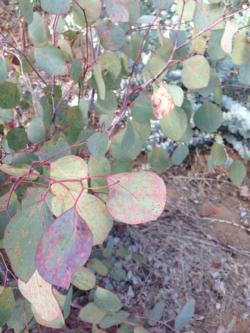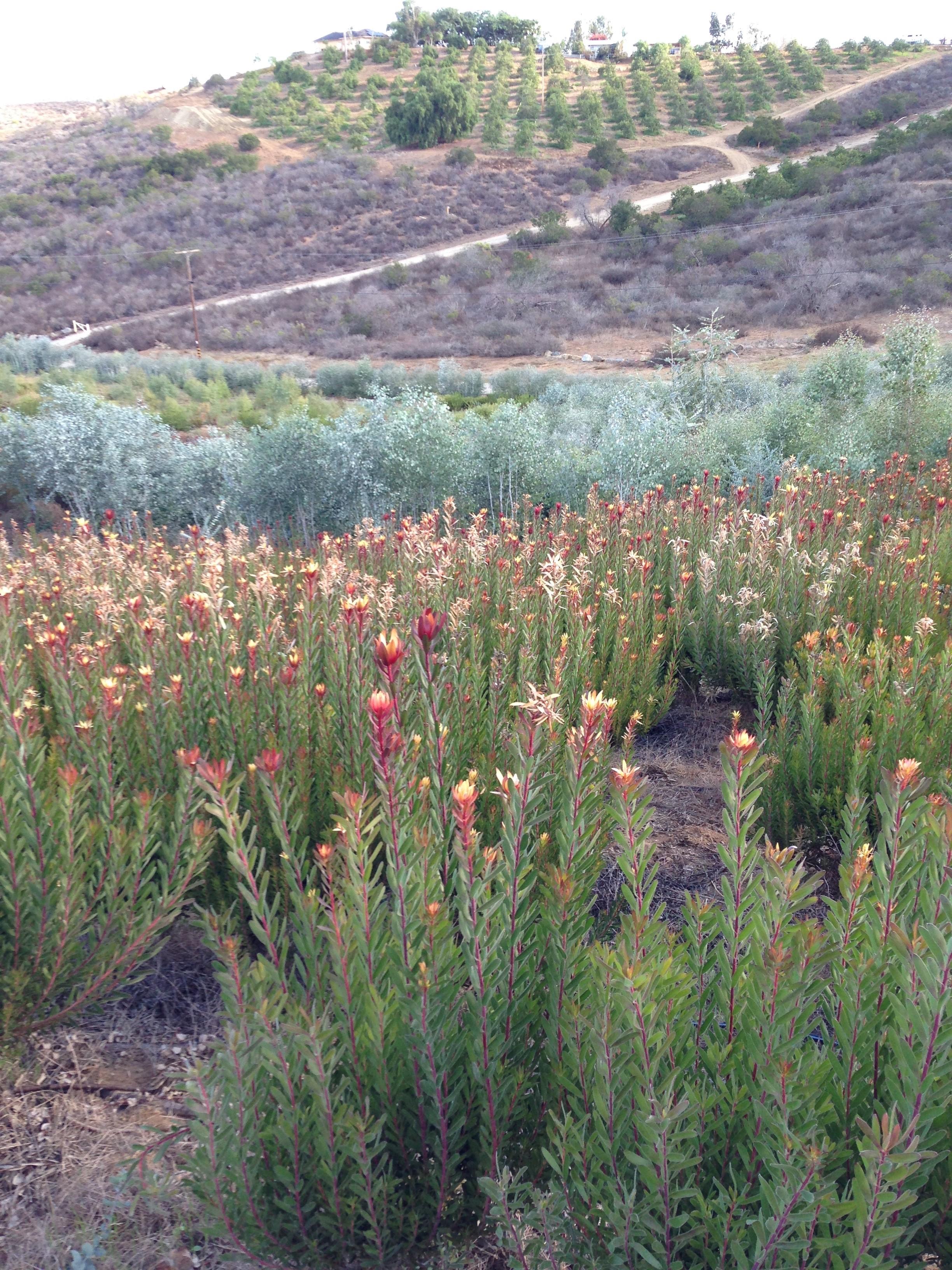San Diego/Riverside: Salts at work again
by James Bethke
Regional Report — UC Cooperative Extension San Diego/Riverside Counties
Salts at work again
by James A. Bethke
A pest control advisor (PCA) who wanted me to visit a cut foliage producer in San Diego County recently called me. The grower was complaining about what he thought was a pathogen on his eucalyptus (fig. 1), and he wanted me to identify it and make a recommendation on how to clear it up.


A second recent call was very similar. A grower of barrel cacti was concerned about yellowing and lack of roots. Again his watering regimen was based on the scarcity and cost of water. He was using city water but the quality of the city water was questionable. A simple recommendation of a good flush of water for about 8 hours and give the plants a little liquid feed fertilizer worked. Voilà, very happy, green and root-growing cacti in about two weeks.
The cost of water has caused many field producers (ornamentals and permanent crops) to reduce their water usage significantly. As that water evaporates and transpires (ET), salts are left behind in the root zone. If salts buildup, they may cause root and plant damage. In this situation, a soil analysis would indicate a high electrical conductivity (EC) or total dissolved salts (TDS). If this is the case, a simple soil flush with water could help leach the salts below the root zone. In the long run, this can be managed by applying enough water at each irrigation to meet the water demands of the plant (ET) and an extra portion of water for irrigation inefficiency and salt leaching. For more information on salinity and management, see the resources below.
Resources
Bender, G. Saline waters — A growing problem. In: Growing Avocados in Ventura County (Avocado Handbook). http://ceventura.ucanr.edu/Com_Ag/Subtropical/Avocado_Handbook/Irrigation/Saline_Waters_-_A_Growing_Problem_/.
Cabrera R, Johnson J. 2015. Evaluating Water Quality for Ornamental Plant Production. Cooperative Extension Fact Sheet S893. Rutgers, The State University of New Jersey. Rutgers, The State University of New Jerseyhttp://njaes.rutgers.edu/pubs/fs893/.
Faber, B. 2016, August 4. A small amount of rain can cause a lot of damage. http://ucanr.edu/sites/ucceventura/index.cfm/?blogtag=salt%20damage&blogasset=19305.
Kratsch H, Olsen S, Rupp L, Cardon G, Heflebower R. 2008. Soil Salinity and Ornamental Plant Selection. Utah State University Cooperative Extension. http://extension.usu.edu/files/publications/publication/HG_Landscaping_2008-02pr.pdf.
Sanden B. 2010, April 23. SJV almond salinity problems. http://westernfarmpress.com/tree-nuts/sjv-almond-salinity-problems. Western Farm Press.
Tanji K, Grattan S, Grieve C, Harivandi A, Rollins L, Shaw S, Sheikh B, Wu L. 2007. Salt Management Guide for Landscape Irrigation with Recycled Water in Coastal Southern California: A Comprehensive Literature Review. http://www.salinitymanagement.org/Literature_Review.pdf.
Texas A&M Agrilife Extension. Ornamental production: Managing salts. http://aggie-horticulture.tamu.edu/ornamental/greenhouse-management/managing-soluble-salts/.
James A. Bethke
Farm Advisor, Nurseries and Floriculture
UC Cooperative Extension San Diego, North County Office
151 E. Carmel St., San Marcos, CA 92078
(760) 752-4715 phone; (760) 752-4725 fax
jabethke@ucdavis.edu; http://cesandiego.ucdavis.edu/





